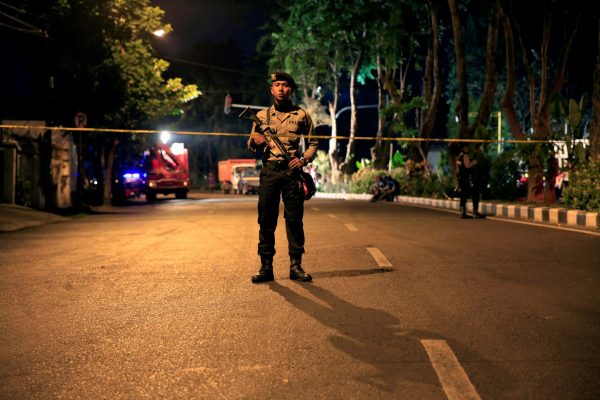There are ongoing reports about Rohingya trying to escape from Myanmar and seeking refuge in Malaysia. Amid the Myanmar army’s denial of its alleged atrocities against the Rohingya, about 700,000 Rohingya have reportedly fled the country since August 2017.
Meanwhile, according to the Global Peace Index, the Philippines is one of the least peaceful countries in the region due to its bloody war against drugs and crime that has resulted in increasing rates of homicide, incarceration and extrajudicial killings. Based on the same report, Indonesia had the greatest performance drop in the Asia Pacific in terms of peacefulness due to an increase in politically-motivated terrorism and growing tensions between hard-line fundamentalists and minority groups. Indonesia is also more and more vulnerable to the threat of an alliance between the so-called Islamic State, Darul Islam and some local violent extremist groups, as shown in the recent Surabaya bombing.
Even decades before the United Nations’ An Agenda for Peace report in 1992, ASEAN had committed to maintaining peace in the region without using the label of ‘preventive diplomacy’. From its inception, ASEAN was intended to be a regional conflict-prevention mechanism that internalised the practices of peaceful dialogue, consultation and consensus building among its members, amid the geopolitical uncertainty and diplomatic breakdowns that characterised the Cold War period.
The ASEAN Regional Forum defined preventive diplomacy for ASEAN in 2001 as member states’ diplomatic or political action to prevent disputes or conflicts that could pose a threat to regional stability, with the purpose of preventing such disputes from escalating to armed confrontation and minimising the impact of those conflicts and disputes on the region.
But in practice, preventive diplomacy in ASEAN is limited to the execution of forums and meetings that do not necessarily producing binding mechanisms to resolve potentially destabilising intra-state conflicts. ASEAN seems to be stuck in confidence-building measures and has not completely implemented preventive diplomacy as envisioned by the United Nations.
Critics point to the development gap and significant political differences between ASEAN member states. The ‘ASEAN way’ that rests on the principles of consensus building and non-intervention is often cited as one of the factors that undermine a deeper commitment to implementing preventive diplomacy. ASEAN’s limited definition of preventive diplomacy is also criticised for constraining the practice of preventive diplomacy in the region to only include conflicts between and among states. This excludes non-state and intra-state conflicts or violence, which are seemingly growing in the post-Cold War era.
But the biggest challenge to preventive violence in ASEAN yet to be taken seriously is the lack of knowledge about conflicts and violence. To this day, it remains a challenge to pinpoint the general trend and exact number of violent events and conflicts within ASEAN. Some instances were allegedly perpetrated by the state, while others were committed by non-state entities and individuals. Although some reports intuitively indicate that violence in ASEAN is increasing, it is hard to identify the exact number of incidents because the data is scarce and rarely updated.
The limited reliable data that is available reveals that each country in Southeast Asia has its own patterns and characteristics of conflict and violence. In terms of intensity, there are also differences in the number of casualties and frequency of incidents. The types of violence also differ and include civil wars, insurgency, crimes, communal conflicts and violence against minority groups.
Relatively little data on violent incidents existed until recently, and the data is generally focussed at the national level. Data on regional trends is patchy and scattered across various sources, which makes it difficult to generate a quick and accurate analysis to aid policymaking processes. Not all countries have the capacity to record such data, which itself can be a controversial process in a number of ASEAN member states where conflicts are sometimes highly political.
Knowledge about the distinct features of violence in ASEAN is crucial to enable policymakers and stakeholders to identify shortcomings in the region’s approach to responding and preventing conflict. Such knowledge would also equip them to come up with effective policies and strategies to promote peace and stability in ASEAN.
A knowledge-based approach would enable stakeholders to resolve conflicts more effectively — not only by managing the impacts but also by preventing the escalation of future conflicts and violence. It would also encourage better practices of data collection and recording violence in and between ASEAN member states — which is essential to monitoring and evaluating preventive diplomacy and progress towards peace in the region.
Hana Hanifah and Askabea Fadhilla are Researchers at the ASEAN Studies Program, The Habibie Center, Jakarta.

